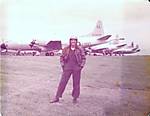Paul,
I’ve enlisted and below is the kit I plan on putting together for this campaign. Its PST’s 72nd scale KV-220 ‘Russian Tiger’ super heavy tank.

A bit of history concerning this vehicle.

This was a Russian KV heavy class experimental vehicle referred to by documents as T220 or Object 220. Prepared at the Kirov Plant and delivered for testing on December 5, 1940 this vehicle differed from the production KV’s in its greater hull length requiring an extra support wheel and return roller assembly per side, increase in track length and a new turret with an 85mm F-30 main gun developed specially for this tank at the No. 92 Plant. Without affecting the inside dimensions of the hull the armor thickness was increased to 100mm. With the added weight of the lengthened hull, tracks, extra suspension components, thicker armor plating and new turret with heavier main gun increasing the total vehicles weight to around 62 tons, this in effect necessitated the installation of a 700 HP V-5 engine. Testing started on January 30, 1941 and was halted the next day due to engine failure.
Testing recommenced on April 20, 1941 when a new engine was finally installed and the vehicle was loaded up to 70 tons, the loaded weight of a KV-3. By the end of May 1941 the vehicle had accumulated 1330 kilometers. In a submitted personal plant test report it had been noted that the vehicle had a poor shifting transmission, the torsion bars had twisted, the suspension components had suffered both bent road wheel arms and support roller spindles and the engine was not powerful enough for a 70 ton tank. On May 20, 1941 the vehicle had been brought in for overhaul and repair and an 850 HP V-2SN Diesel engine with supercharger was installed. The vehicle again was subjected to vigorous testing beginning May 30, 1941 and by June 22, 1941 had accumulated a total distance of 1,985 kilometers.
By early October 1941 when production of the KV tanks in Leningrad had almost come to a halt it was decided that the experimental tanks at the Kirov Plant be turned over to the troops. All of these vehicles including the KV-220 underwent necessary repairs at which time a KV-1 turret, with the 76mm F-32 main gun, was installed to the chassis because the 85mm F-30 main gun had been disabled at the beginning of summer. On October 5, 1941 the experimental KV-220 (factory No. M-220-1) was issued to the 124th Tank Brigade.
The vehicle was lost in December of 1941. Below is the actual account of D. Osadchiy, commander of the 124th Tank Brigade.
"In the fall of 1941 our brigade received several KV tanks as replacements, one of which was named ‘Za Rodinu’ [For the Motherland]. It was produced as a single example at the Kirov Plant. It had the same capabilities as the KV tank, but it had heavier armor protection, a weight of more than 100 tons, and more a powerful engine with turbocharger. During movement in the upper gears the engine whistled and this whistling was very much like the whistle of a diving ‘Junkers’. The first time after receipt of this tank during its movement in the brigade someone even gave the ‘air alert’ signal. The tank came to my company and initially we wanted to make it my command tank. But alter it became the command tank of my deputy, experienced tanker Lieutenant Yakhonin. The tank was considered practically indestructible for enemy artillery and was intended for assault on fortified positions.
In December 1941 (I don't remember the exact date), our brigade received the mission to break through the Germans' defense in the sector Ust-Tosno railroad bridge, force the Tosna River, and in coordination with units of 43d Rifle Brigade develop the attack toward Mga. The 2nd Tank Battalion under the command of Major Pankin, a tank platoon from 1st Battalion, and the tank ‘Za Rodinu’ from my company attacked in the first echelon. In this battle the tank received the mission to capture the railroad bridge across the Tosna River and hold the bridgehead for the arrival of the main body. The battle unfolded on open terrain. The frozen upper layer of peat barely supported the tank. When it approached right up to the bridge, it was greeted with the fire of German heavy guns and radio communications with the tank were lost. At this time I was at the battalion command post. When communications were broken with the tank ‘Za Rodinu’, I attempted to reach the place of the engagement along the railroad embankment. When I managed to crawl to the tank, I saw that the turret had been blown off the tank and the crew was all dead."
A complete written history surrounding the KV-220 Heavy Breakthrough Tank can be found
here.
-Eddy




















































































